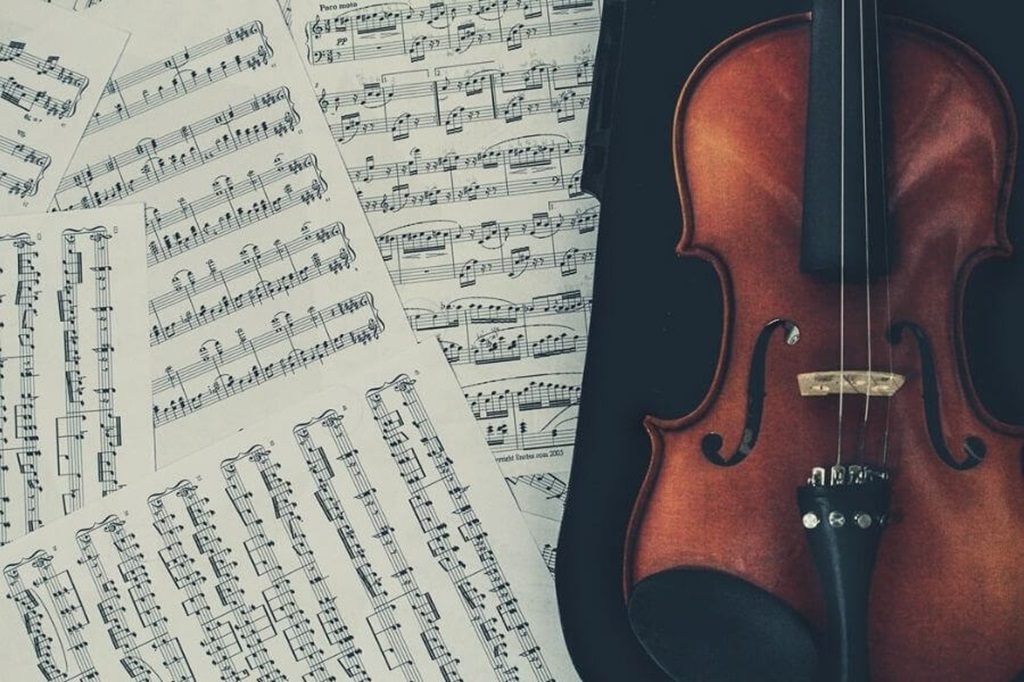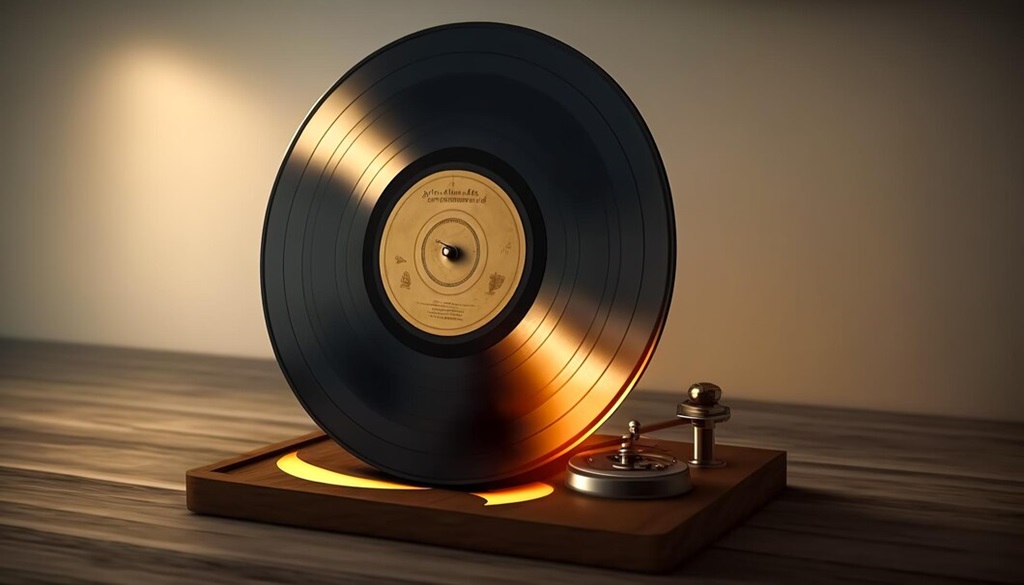
Learning to read music is an essential part of learning to play the violin. While it may seem daunting at first, memorizing the notes on the violin can be easy with the right techniques. Whether you’re a complete beginner or have been playing for years, having the note names and locations committed to memory will make sight reading music much easier. Follow these tips to memorize the violin note chart quickly.
Violin Note Chart
There are two main ways to represent violin note charts in a table:
- By String: This table shows the notes that can be played on each of the four violin strings, from the highest (E) to the lowest (G).
| String | Open | First Finger | Second Finger | Third Finger |
| E | E | F# | G# | A |
| A | A | B | C# | D |
| D | D | E | F# | G |
| G | G | A | B | C |
- By Note: This table shows all the notes that can be played on the violin in first position, listed from lowest to highest.
| Note | String | Finger |
| G | G | Open |
| A | G | First |
| B | G | Second |
| C | A | Open |
| D | A | First |
| E | A | Second |
| F# | A | Third |
| G | D | Open |
Learn the Note Names on the Staff

Before you can learn the notes on the violin, you need to memorize the note names on the musical staff. Here are the notes you need to know:
- The notes on the lines of the staff from bottom to top are: E, G, B, D, F.
- The notes in the spaces from bottom to top are: F, A, C, E.
- Memorize the saying “Every Good Boy Deserves Fudge” and “FACE” to help remember the line and space notes.
Memorize the Note Locations on the Violin
Once you know the note names, it’s time to learn where the notes are located on the violin. Here are some tips:
- Start with the open strings. The notes from lowest to highest are G, D, A, E.
- Focus on memorizing one string at a time. Say the letter names out loud while playing the notes.
- Use mnemonic phrases like “Driving Alone Endlessly” to memorize the open strings.
- Learn the natural notes first before sharps and flats.
- Say note names out loud while playing scales to reinforce pitch and letter names.
Use Memory Techniques
Take advantage of memorization techniques like associations, chunking, visualization, and the memory palace to quickly memorize note names and locations.
Associations
Link notes on the violin to words, people or objects. For example, A is for apple, D is for dog. Create fun associations in your mind.
Chunking
Group notes into small chunks of 2-4 notes instead of memorizing notes individually. Chunk similar notes together.
Visualization
Picture each note on the fingerboard. Visualize playing the note and saying its name out loud. Draw the violin and write note names.
Memory Palace
Mentally place notes in familiar locations in your “mind palace.” Envision walking to each note in a room and saying its name.
Use Mnemonic Devices
Rhymes, acronyms and sayings can help solidify note names and locations in your memory. Here are some examples:
- “D G B D F” for the line notes on the staff
- “Good Boys Do Fine Always” for the line notes
- “Every Good Boy Deserves Fudge” for the line notes
- “FACE” for the space notes on the staff
- “A Dog Can Eat” for the violin string notes
- “Driving Alone Endlessly” for open strings from lowest to highest (GDAE)
Come up with your own silly sayings and acronyms to make memorization more fun!
Apply to Music
Once you’ve memorized notes individually, it’s time to apply your knowledge to sheet music. Practice finding notes on your violin while looking at printed music. Quiz yourself by covering up the music and trying to play from memory. The more you actively recall notes while reading and playing, the quicker memorization will happen.
Be Patient
Memorizing the notes across all strings in multiple positions takes time. Don’t expect to master the violin fretboard overnight. Memorize a section at a time, and gradually increase your range. Stick with it, and your note reading abilities will improve.
Practice Regularly

Like any skill, you need consistent practice for memorization to stick. Set aside a few minutes each day to practice saying note names out loud while playing. The more you repeat the information, the better you will remember it.
Use Memorization Games and Apps
Make your practice fun by turning it into a game. Apps like Note Teacher and Music Tutor Sight Read can test your note reading abilities. Or make flashcards with note names on one side and locations on the other. Mix up your practice to stay engaged in the material.
Tips for Memorizing Faster
Use these additional tips to memorize the violin note chart even quicker:
Break It Down
Don’t try to memorize all the notes at once. Start with just the natural notes (A, B, C, D, E, F, G) in first position. Then expand to sharps, flats, double sharps and other positions gradually.
Quiz Yourself
Frequently testing yourself is one of the best ways to memorize material faster. Use flashcards or apps and try to name notes on your violin without references.
Learn by Intervals
Knowing the interval distances between notes can help you figure out uncertain notes based on surrounding context. Learn 2nds, 3rds, 4ths, 5ths, etc.
Use Mnemonics
Rhymes, songs and acronyms set the note names and locations to music to make them more memorable. Make up creative memory devices of your own.
Muscle Memory
Your hands will naturally memorize the feeling of playing certain notes in position from repetition. The physical memory will reinforce your mental memorization.
Relate to Guitar or Piano
If you already play another instrument, relate the notes on the violin to notes you know. The patterns are similar but in different octaves.
Find Anchor Notes
Use open strings, harmonic notes or middle C as reliable reference points to orient yourself and branch out to new notes.
Say Note Names Out Loud
Verbally reinforce muscle memory by saying each note name while you play the note. Auditory cues strengthen memorization.
Use Colored Tape
Mark the note locations on your violin fingerboard using colored tape. It provides a visual reference as you learn the notes.
Be Patient
Learning the notes takes regular practice over time. Stick with it and the violin fretboard will become second nature before you know it.
Maintaining Memorization Long-Term

Here are some tips for making sure you retain the violin note chart in your long-term memory:
Reinforce with Regular Practice
Brief, frequent practice sessions are better than cramming. Play scales, arpeggios and familiar pieces often.
Apply Memorization to New Music
Keep strengthening your note-reading abilities by continuously learning new repertoire. Don’t just play the same music.
Periodically Quiz Yourself
Test yourself once a week or so to identify memory gaps. Use flashcards or apps to refresh forgotten notes.
Relate Notes to Musical Context
Don’t just memorize notes as isolated letters and positions. Relate them to keys, chord progressions, intervals to give them musical meaning.
Play by Ear
Develop your ability to play back melodies you hear without sheet music. Ear training will reinforce note recognition.
Improvise
Make up new melodies as you explore the violin fingerboard. Improvisation keeps your mind actively engaged with the notes.
Change Positions
Move between lower and higher positions to solidify notes across the fretboard. Don’t just play in first position.
Review Fundamentals
Revisit violin basics like scales, arpeggios and 3rd finger patterns to maintain proficiency. It strengthens muscle memory.
Remain Patient and Positive
Learning an instrument takes years. Stick with it, focus on progress, and keep your violin note chart sharp.
Common Challenges Memorizing Notes
You may encounter these common obstacles as you work on memorizing the note chart:
Too Many Notes
There are a lot of notes across all strings and positions! Take it slowly, focus on one section at a time, and gradually expand.
Forgetting Sharps/Flats
Use memory aids like “Father Charles Goes Down And Ends Battle” or colorful tape to help differentiate sharps and flats.
Confusing ledger line notes
Ledger lines above and below the staff can make note reading tricky. Reinforce by studying the note chart.
Losing your place
Use markers, highlighters or your finger to keep your place while sight reading. Take it slow.
Note names vs. finger placements
Memorize the note names separately before connecting them to finger positions. Say note names out loud.
Lack of consistency
You need regular, repetitive practice for memorization to stick. Even 10-15 minutes daily is beneficial.
Be patient and persistent to overcome these common violin note reading challenges. Consistent practice will get easier with time.
Tips for Beginners

If you’re new to violin, keep these tips in mind as you get started memorizing notes:
Start with open strings
Master the notes GDAE on the open strings before adding fingered notes.
Focus on first position
Stick to the natural notes in first position at first. Add sharps/flats and higher positions later.
Reinforce with tapes and markers
Use colored tape, fingerboard markers or stickers to visually guide your learning.
Learn one string at a time
Completely memorize the notes on the G string, for example, before moving to the D string.
Say note names out loud
Verbally reinforce muscle memory by saying each note name as you play it.
Use memory aids
Rhymes, acronyms, sayings and apps can provide needed reinforcement for beginners.
Be patient!
Learning violin takes time and consistent practice. Celebrate small achievements along the way.
Get a teacher
A violin instructor can give personalized guidance and catch issues early on. Highly recommended for beginners.
Keeping things simple and focused in the early stages will set you up for long-term success memorizing violin notes.
Conclusion
Learning the notes on the violin opens up exciting musical possibilities, but memorizing the violin note chart requires dedication. While it may feel overwhelming as a beginner, stick with consistent daily practice and celebrate small milestones. Mnemonic devices, memory techniques, games, and apps can provide needed reinforcement. Memorize notes in short chunks, apply your knowledge to actual songs, and be patient with yourself in the process. In time, you’ll develop quick note recognition skills that will take your violin playing to the next level. Trust the process, have fun with your practice, and you’ll quickly memorize those violin notes!
FAQs
How long does it take to memorize the note locations?
It largely depends on how consistently you practice. Plan on at least a few weeks to memorize notes comfortably in first position, and several months to master the entire fingerboard.
Which notes should I learn first?
Start with the open strings G, D, A, E, then add the natural notes in first position one string at a time. Sharps, flats and higher positions come later.
What are some shortcuts for reading ledger lines?
Think in terms of intervals like 3rds and 4ths from familiar lines. For example, a note three ledger lines above the staff is a 3rd above that top line.
Is tape or markers on the fingerboard considered cheating?
Not at all! Tapes and markers are very helpful visual guides as you’re learning the notes, especially for beginners. Use them as needed.
What should I do if I’m stuck in first position?
Start expanding your range. Try playing scales, arpeggios and easy melodies in higher positions. Apply your note knowledge beyond first position.


 Most Popular Songs With Baby in the Title
Most Popular Songs With Baby in the Title  The Songs Everyone Knows but Not the Name
The Songs Everyone Knows but Not the Name  Get Up and Dance! Songs Like Cupid Shuffle to Keep the Party Going
Get Up and Dance! Songs Like Cupid Shuffle to Keep the Party Going  How to Memorize Violin Note Chart Quickly?
How to Memorize Violin Note Chart Quickly? 


